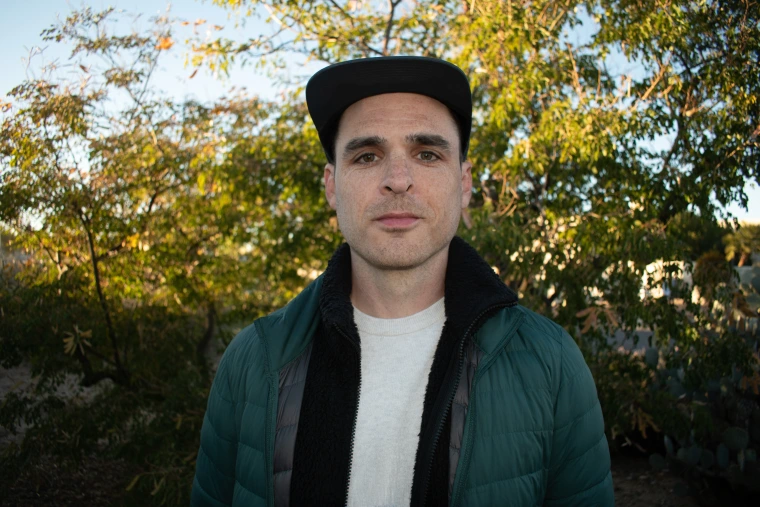Dugan Meyer

Research Areas
My work is focused on critical geographic approaches to (in)security in the United States. I am especially interested in the infrastructural dimensions of police power, particularly the capacity of policing—as a spatial technology—to produce and shape social landscapes in a variety of contexts, from border regimes to housing markets to a range of affective economies.
My work includes an ongoing project to produce a visual archive of security infrastructure (beginning) in the borderlands of the southwestern United States. Since 2023, I have been studying and documenting the rapidly expanding 'system of systems' of U.S. border surveillance and security infrastructure along the length of the U.S./Mexico border and beyond. Originally in collaboration with Colter Thomas, another photographer, and guided by the Electronic Frontier Foundation’s publicly accessible map of U.S. Customs and Border Protection surveillance technologies—a map to which I am also contributing through my work—and other collaborations, I use photography, mapping, ethnography, archival work, and other tools to look closely at the infrastructural project of producing and policing borders. You can see some of my photographs from this work on my website: www.duganmeyer.com. Images, writing, and publicly-available resources are all in progress.
I collaborate with others on a variety of projects related to this work, and I make images, information, and other materials available to others whenever possible. If you are a researcher, artist, advocate, journalist, or anyone else who cares about the borderlands and the people who move through them and my work might be useful to you, I hope you'll get in touch!
Other Projects:
I also have an ongoing collaboration with Dr. Stefano Bloch focusing on the racial and affective politics of white liberalism in the context of gentrification. You can find links to our work in the list of publications below.
I have previously worked with Drs. Mark Kear and Margaret Wilder—and others—on research exploring the economic, administrative, and affective borderscapes through which displacement is produced as an everyday fact of life for many residents of manufactured housing. You can find links to some of this work in the list of publications below.
Academic Publications:
Bloch S and Meyer D (2023) Displacement and affective economies in gentrification research. Dialogues in Urban Research 1(3): 248-251. Link: http://tinyurl.com/58t4paea
Kear M, Wilder MO, Martinez-Molina KG, McCann L, and Meyer D (2023) Home thermal security, energy equity and the social production of heat in manufactured housing. Energy Research & Social Science 106. Link: http://tinyurl.com/z75c794b
Bloch S and Meyer D (2023) Displacement beyond dislocation: An affective methodology for gentrification studies. Dialogues in Urban Research 1(3): 206–225. Link: http://tinyurl.com/5n7r9uut
Kear M, Meyer D, and Wilder M (2023) Real property supremacy: Manufactured housing and the limits of inclusion through finance. Annals of the American Association of Geographers 113(8): 1900-1917. Link: http://tinyurl.com/2x9zbjre
Meyer D (2020) Security symptoms. cultural geographies 28(2): 271–284. Link: https://tinyurl.com/y84723y7
Bloch S and Meyer D (2019) Implicit revanchism: Gang injunctions and the security politics of white liberalism. Environment and Planning D: Society and Space 37(6): 1100-1118. Link: https://tinyurl.com/ybahdw49
Kear M, Handschuh T, Launius S, Hartman J, Meyer D, Christopherson G (2018) The "Manufactured Housing Gap" in Tucson and Pima County: Introduction and Preliminary Analysis. White Paper #12. Making Action Possible in Southern Arizona (MAP Dashboard). Link: https://tinyurl.com/yd3kvxp4

